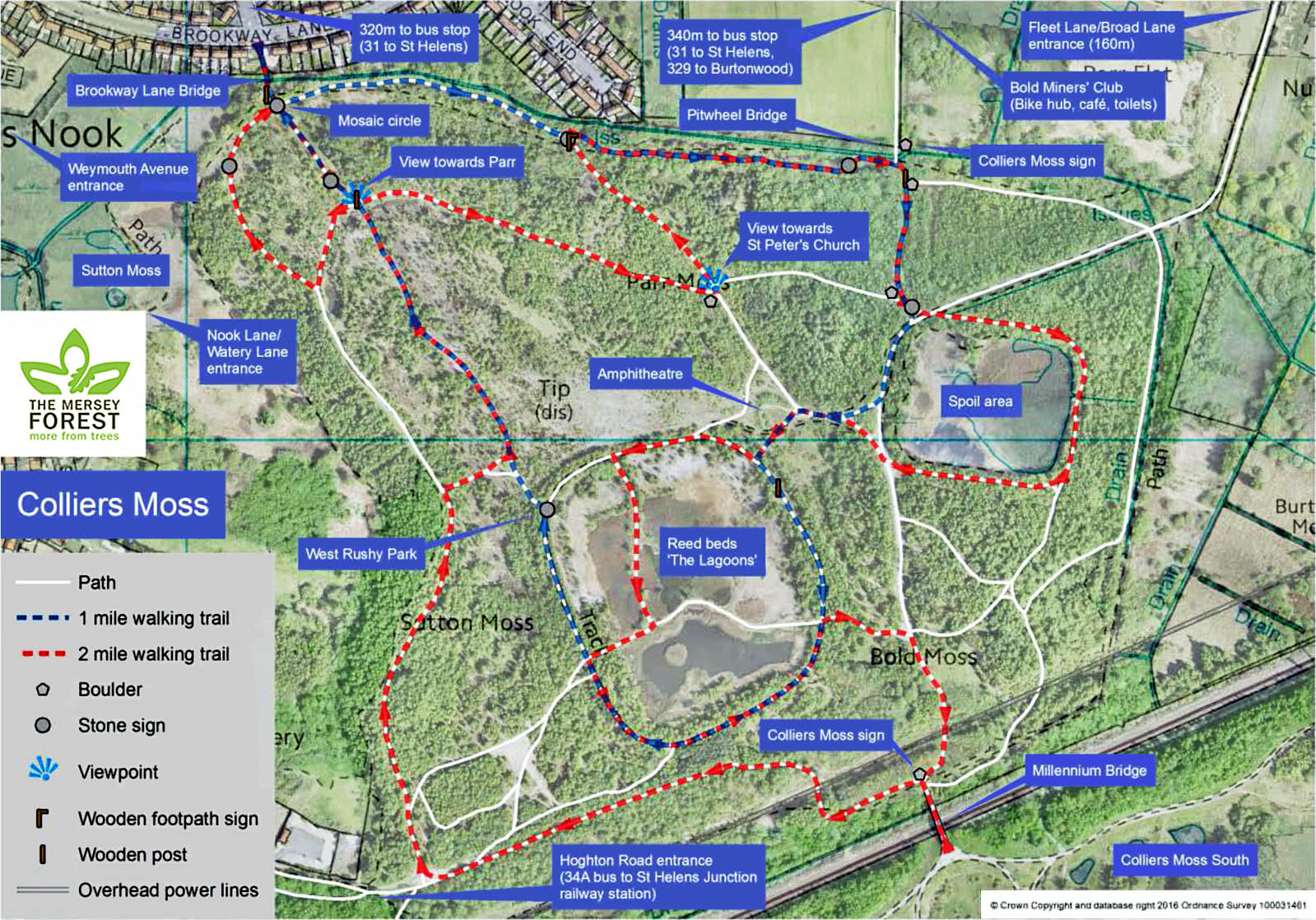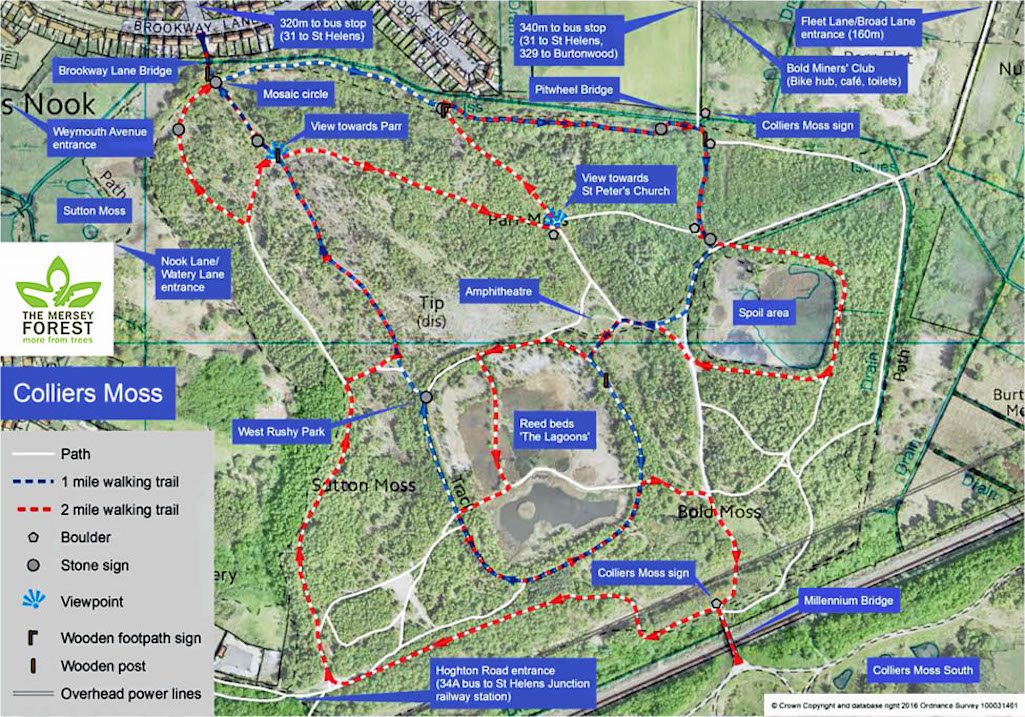
Colliers Moss, Bold in St. Helens
Created on the spoil and waste heaps of Bold Colliery & Power Station
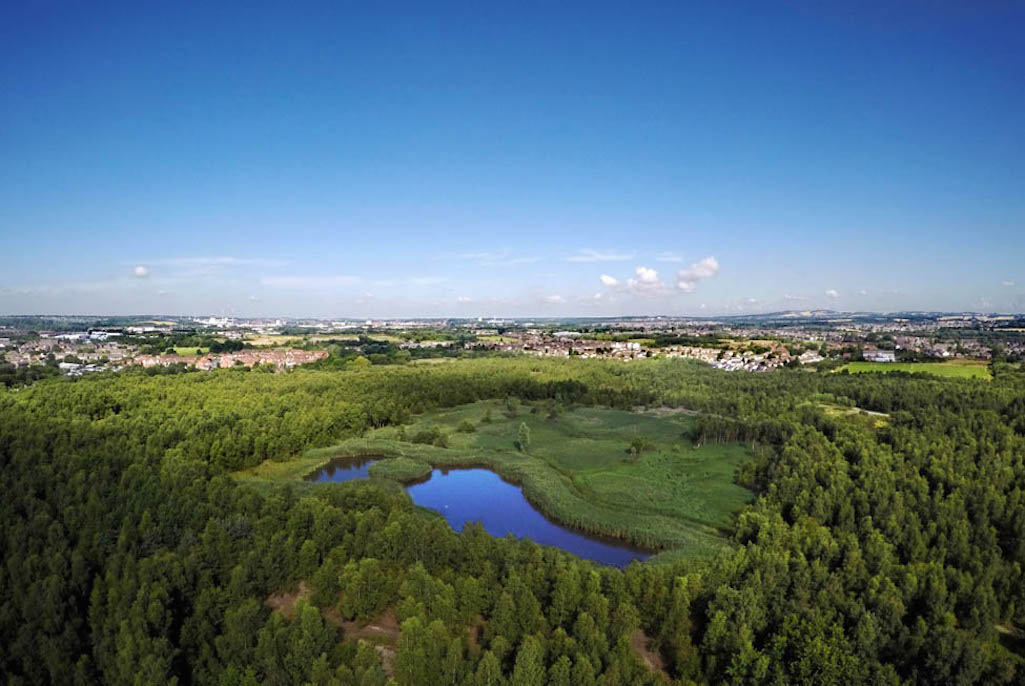
Dead, compacted mossland forms peat and an industry was created in which turf cutters dug long trenches to remove the peat. The extracted turf blocks were then built into an array of thousands of pyramids – each measuring between 3 and 12 feet tall – in order for them to dry out. This was required as sphagnum mosses behave like sponges, holding an enormous amount of water.
In between the trench rows were tramlines that allowed ponies to pull slatted trams of peat turf to nearby sheds where 'pressing' took place. Once this process had been completed, the peat was sold as firelighters or animal bedding litter. This industry largely ended around WW1 and for forty years the site was a fertile natural habitat for wildlife.

Turf-cutters on Sutton / Bold Moss removing and laying out the peat which was used as firelighters or animal bedding litter

Turf-cutters on the Moss removing and laying out peat

Turf-cutters on Sutton / Bold Moss
So over the next twenty-three years about nine million tons of the stuff was dumped onto mossland causing enormous environmental damage. As well as spoil, sludge from the colliery’s coal washery was pumped across on to the Moss, and in later years ash from Bold Power Station ended up there too.
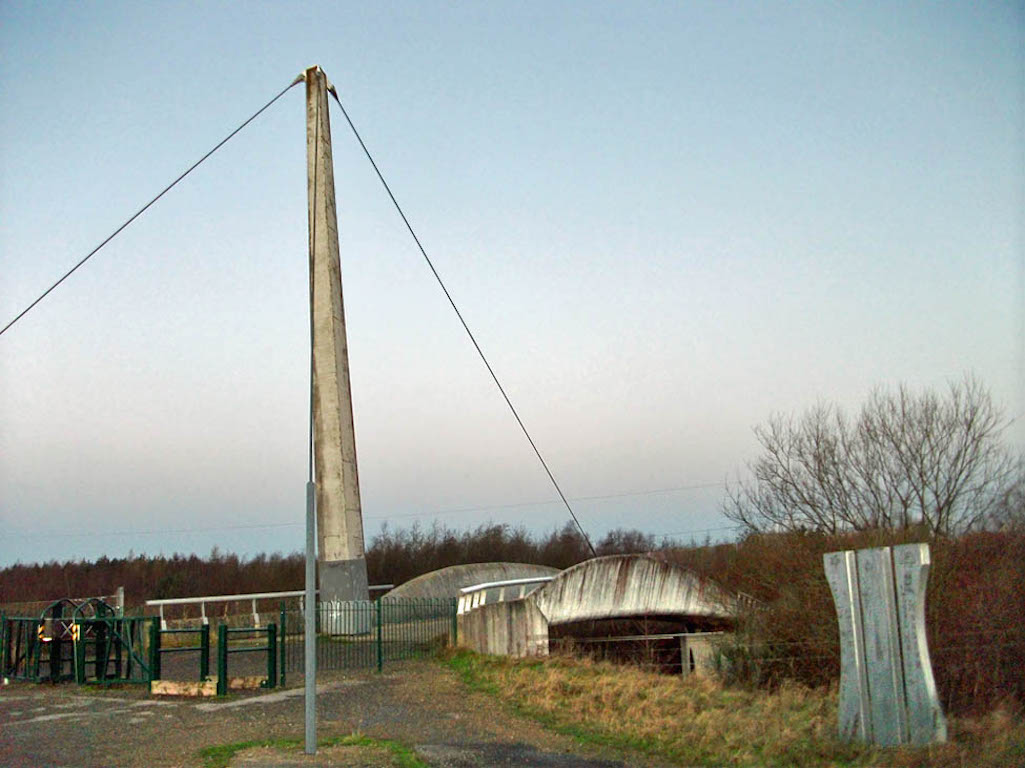
Millennium Bridge which links the north and south of Colliers Moss, formerly known as Bold Moss

Millennium Bridge links the north and south of Colliers Moss

Millennium Bridge in Colliers Moss
In fact the closure of the colliery and the power station in 1991 greatly increased the numbers of local residents. Most of the 1,500 or so colliery workers had lived in NCB houses in Parr and many of the power station workers commuted to work from St Helens. However the building of the New Bold Estate on the site of Bold Power Station, off Travers Entry, has housed large numbers of people in more than twenty streets. These all have floral names, such as Daffodil Gardens, Orchid Way, Begonia Gardens, Columbine Way etc.
During the 1990s much work was undertaken to mitigate the effects of the environmental damage that the dumping had caused and give nature a hand. The soil was now very acidic and hostile to plant growth but machinery loosened up the compacted shale and fertilizer and lime were introduced. Grass, heather and wild flower seeds were then planted, along with rowan, alder, willow and maple trees. Interestingly the alkaline chalky ash from Bold Power Station on parts of the site balanced the acidic coal spoil and assisted plant growth.
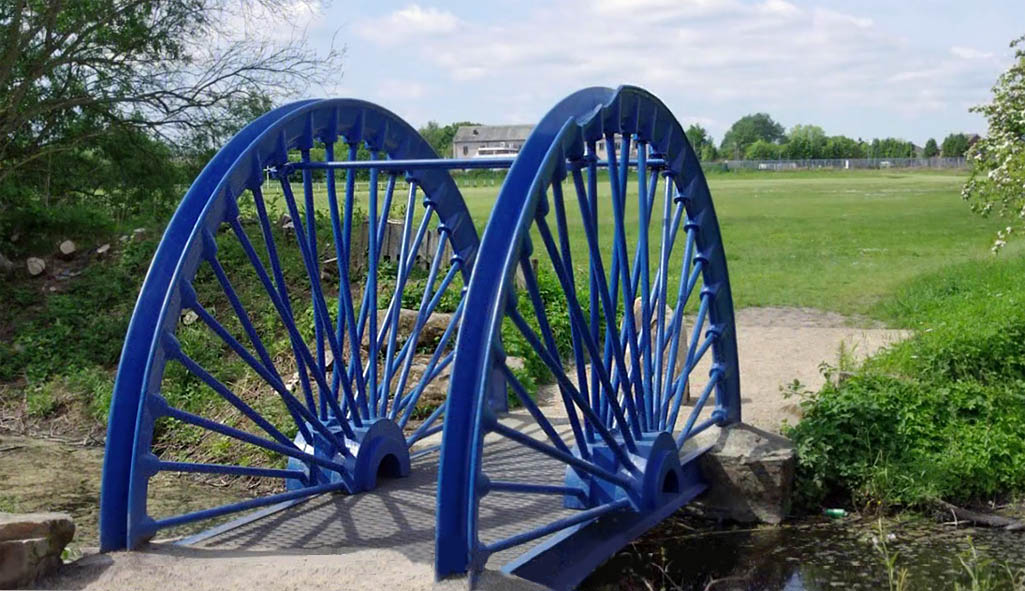
Pit-Wheel Bridge - the winding wheel on the outskirts of Colliers Moss - courtesy The Mersey Forest

Pit-Wheel Bridge winding wheel on the Colliers Moss site

Pit-Wheel Bridge winding wheel

These days the habitats at Colliers Moss include wetlands (lagoons and streams), woodland, grassland and heathland. Appropriately with Orchid Way nearby, colonies of orchids have spread on the common and new species of wildlife are arriving each year. The remnants of mossland that border the site have been restored and areas of sphagnum moss are developing. The multi-use pathways provide good access for walkers, cyclists and horseriders, with a number of seating areas for visitors to take a break. Interestingly the gates on the site have a design inspired by the cooling towers of Bold Power Station.
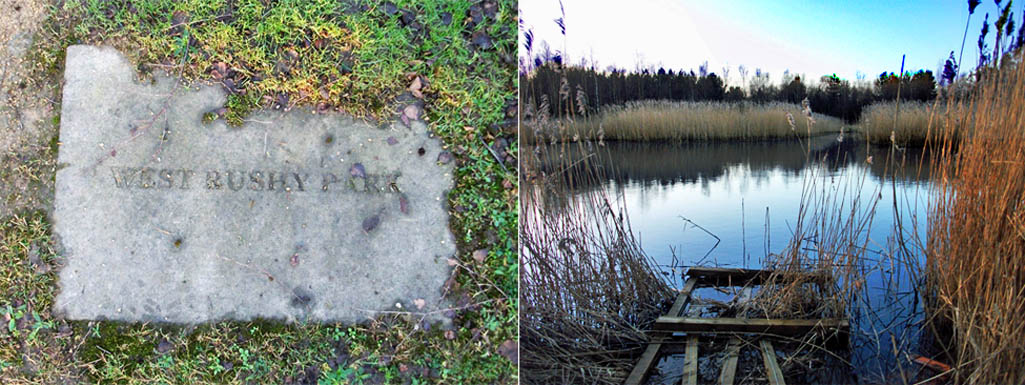
Then in December 2015 there was more good news with the announcement of a £50,000 grant from the Cory Environmental Trust, which would result in improved access to the common. This paid for a programme of thinning overgrowth, enhancing site entranceways and improving footpaths. The work was carried out by Lancashire Wildlife Trust and it was completed in Spring 2016. Brookway Lane Bridge and its nearby ground mosaic were radically improved, along with Pit-wheel Bridge.
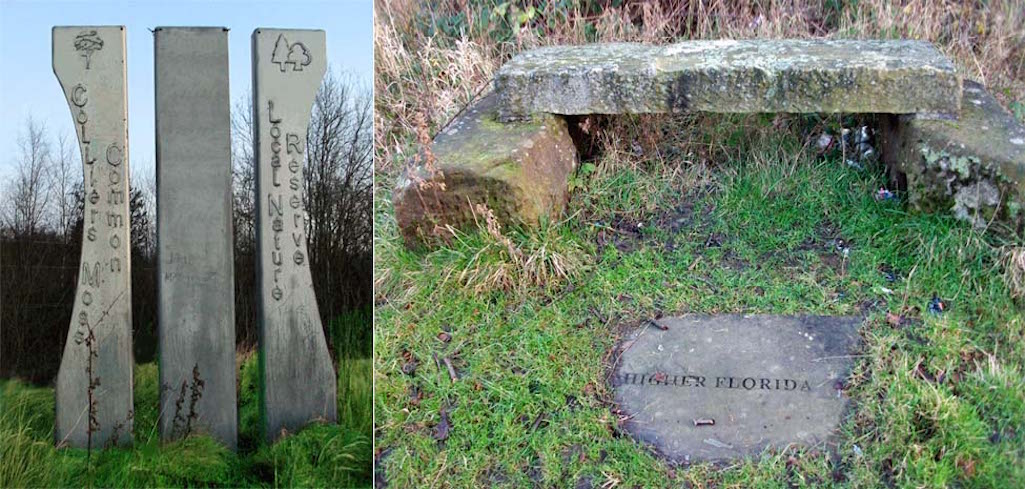
There a number of references in Colliers Moss to the coal seams that were mined by Bold and Ashton’s Green collieries

References in Colliers Moss to coal seams that were mined by Bold Colliery

Colliers Moss welcome sign and seat
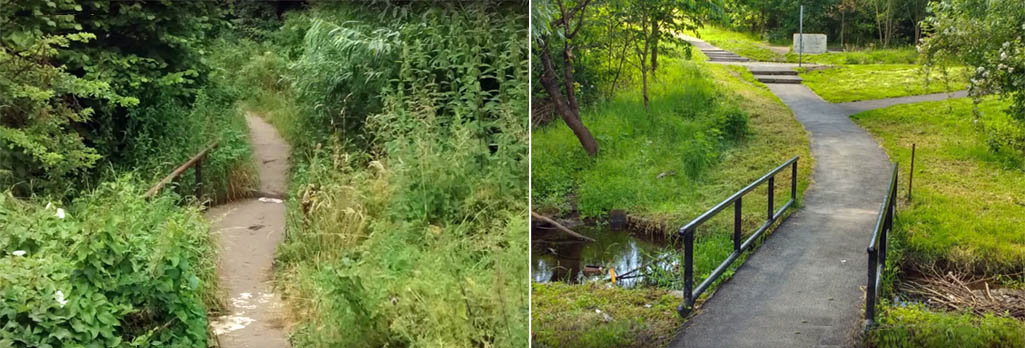
Before and after photographs showing the improvement to Brookway Lane Bridge - courtesy The Mersey Forest

Before and after pictures of Brookway Lane Bridge

Before and after photographs of Brookway Lane Bridge
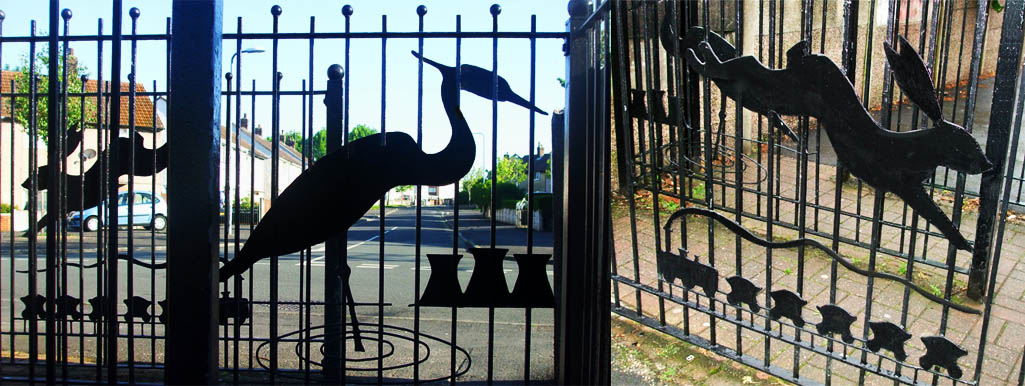
The entrance to Colliers Moss from Brookway Lane in Sutton, directly opposite Moss Lane (postcode WA9 3RL)

Entrance to Colliers Moss from Brookway Lane (WA9 3RL)

Colliers Moss from Brookway Lane
Bold Moss
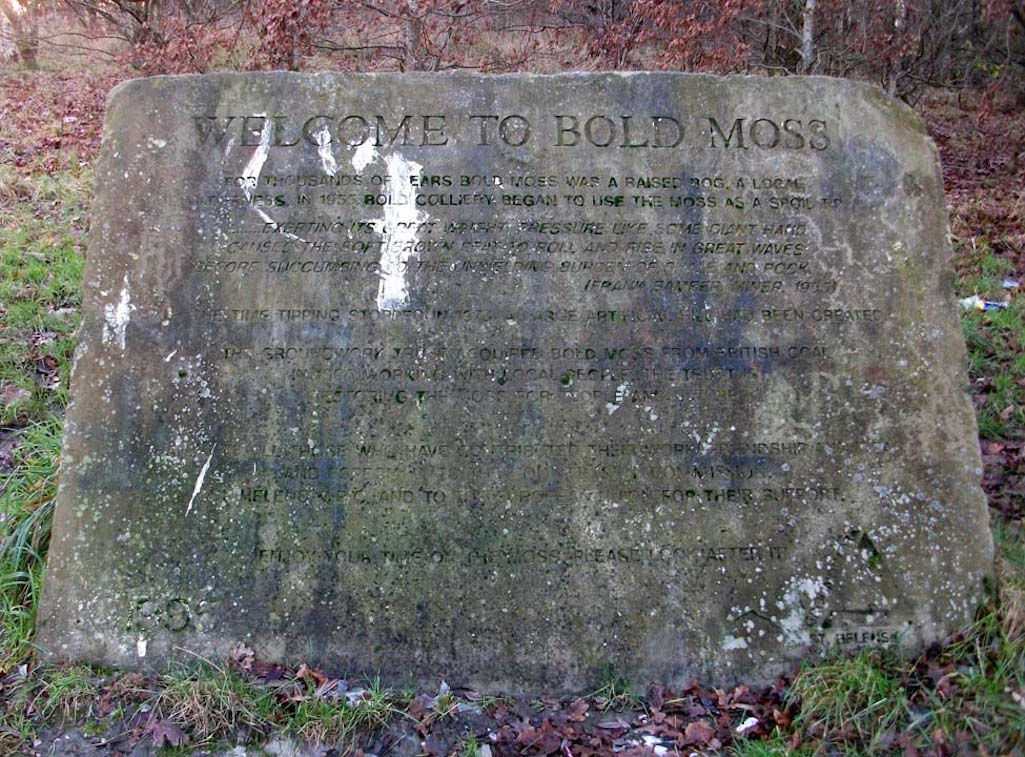
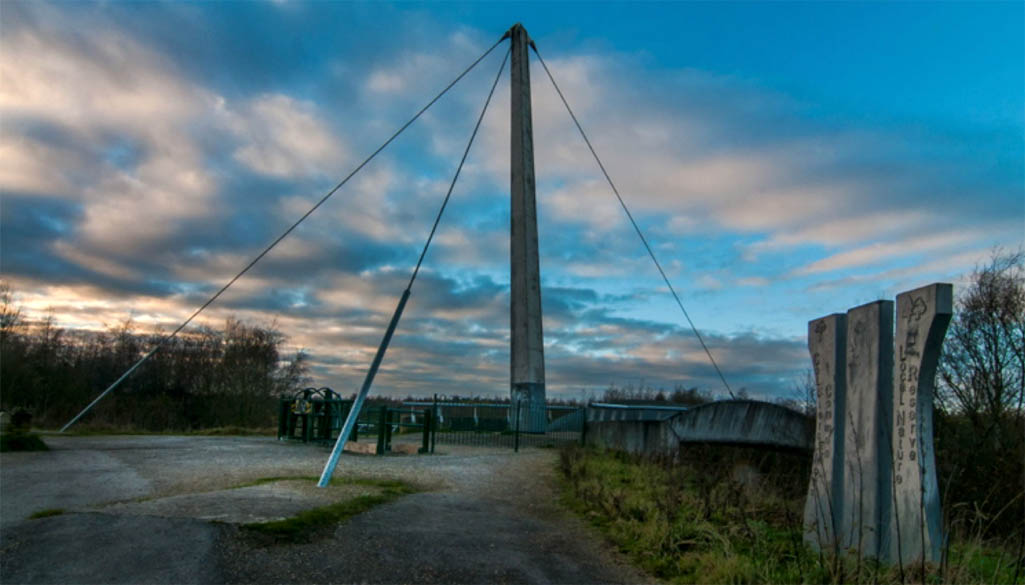
Events begin from Millennium Bridge which links the north and south of Colliers Moss (photo from The Mersey Forest)

Events begin from Millennium Bridge at Colliers Moss

Events start at Millennium Bridge
Colliers Moss / Bold Moss Videos:

